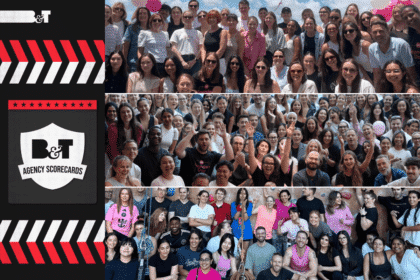Netflix is coming. This much we know. But what does that mean for the existing services already in the Aussie streaming space? Craig White from EzyFlix.tv has some thoughts.
Trying to predict exact outcomes of iterative yet still subtle change with any form of accuracy is almost impossible. However, envisaging a ‘future state’ over a five, ten or twenty year horizon can be far more insightful particularly if you can look backwards over the same periods to look for trends that may well be continuing.
Case in point, it was as early as 1991 that now former US Vice President Al Gore popularised the phrase the “Information Superhighway”, seeking to garner support for a fibre optic cable network which would link everyone at home or office to everything else—movies and television shows, shopping services, electronic mail and huge collections of data.
Back then, Gore probably made almost no sense to the greater majority of folks whom at that stage didn’t even own a DVD player.
Twenty years later I was lucky enough to hear him speak at an internet retailer conference where he claimed the “internet is the fastest growing and most disruptive technology in the history of the world”.
I wondered for a moment if his assertion related back towards the time of his earlier mutterings about the “Information Superhighway” or if it was more a forward looking statement that will prove to again impact our lives as profoundly.
History shows a small challenge can create big changes
As far as business models go, 20 years is a long time. It was almost that long ago that Reed Hastings founded Netflix (1997) after receiving a $40 late fee from his local video store. He decided that an ‘all you can eat’ monthly charge for both avid and causal customers was a good idea, in much the same way as his gym membership worked.
Back then, even Hastings couldn’t have foreseen the rise and rise of Netflix, including the launch of its streaming services.
It was clear by the mid 2000’s that entertainment industry giants like Blockbuster Video and other US video chains were too slow to adapt to the change in the competitive landscape that the Netflix value proposition brought.
Their entrenched business model and revenue sources (which included very lucrative late fees), combined with heavy debt loads, hampered their ability to adapt to what was then a very small but significant change in the competitive landscape.
What these companies really needed to do was to more fundamentally challenge, rather than defend, their existing business model to meet the changing behaviours of customers, who will naturally always gravitate to businesses that provide the best convenience and value.
Netflix in Australia
Even before Netflix officially arrives, it has already caused stir with incumbent broadcast media companies. You would hope so given the lessons learnt by traditional print media companies in the face of threats from carsales.com.au, seek.com and real-estate.com.au.
But the question of whether such organisations are ready to adapt and do so quickly enough remains open.
History dictates that it is better and ultimately less costly to challenge your existing business model and adapt to fundamental change rather than to play defence against an onslaught of insurgent start ups and more nimble players that don’t have any legacy revenue to protect, can access capital and whose guiding principle is to delight the consumer first, not the stock market.
What we are currently seeing is price being used as a tool by the likes of Fetch, Foxtel, Presto and others, who have all halved the cost of their content offerings over the past year or so. While attractive to consumers, what we are seeing is still defensive play.
It’s akin to when the rail industry dropped train ticket prices while adding other luxuries to the travel experiences to combat the then fledgling airline industry. While it made them slightly more attractive, the crux of the issue was that there was a new, better way for consumers get what they wanted.
A defining year for Video on Demand
2015 will be a watershed year for online video in Australia. I don’t envisage the end to the consumption of Free to Air TV or the local council being immediately overwhelmed with the sheer number of IQ or Fetch set top boxes that churned customers will lay on the curb side awaiting collection.
But there will be wholesale change in consumer behavior fundamental enough to substantially disrupt the establishment. It is only a question of when.
With three to four subscription video on demand (SVOD) services in the market, including Stan and Netflix to come, Australia will have gone from being under-served to completely saturated. In no market in the world, including the US, are there more than two meaningful SVOD players.
Here, the old adage that the big don’t always eat the small, but the fast will always overtake the slow will ring true. Adapting to change will determine the ultimate winners and losers.
Undeniably, only one or two large scale SVOD services will prevail in Australia and other broadcast media establishments with their ‘minimum cost over 12-24 months’ asks will be ‘unbundled’. Subscription TV will be a success in smaller consumer driven choices of bundles. And switching providers for such bundles will become as easy as changing the channel on the TV.
Netflix will be a winner locally because even with a watered-down content offering relative to its U.S service, it will still provide a torrential waterfall of content and choice relative to local providers.
But with over 50 million subscribers worldwide and a market value of US$20B, compared to Time Warner’s US$70B (owners of HBO and CNN which was subject to a recent takeover offer from Murdoch), I also am betting Netflix will soon be in Murdoch’s acquisitive sights (if not already) rather than his competitive frame of reference.
So what about me?
For EzyFlix.tv, SVOD services and even Netflix are highly complementary. History shows SVOD services were, for most US consumers, their first entry point into online video. And EzyFlix.tv’s offering and business model is nimble enough to stand apart from some of the pack.
As EzyFlix.tv focusses its mission to provide earlier access to the latest new release movies from every major Hollywood studio – something that Fetch, Foxtel, Netflix, Presto, Stan and QuickFlix cannot claim – we stand in a good position compared to our competitors.
We’re also able to ‘go rogue’, experiment and as a local startup, fight for our consumers. For example, we’ve recently announced a new pricing promotion that gives Australians access to the latest movie titles for the same price as their US counterparts for the festive season.
This is a pitch to show that entertainment providers can in fact deliver increased value and access to top content, and hopefully it will back up the theory that Aussies will buy (rather than just illegally download) content when it is priced fairly.
But one tactic will never be enough, and with direct pay per view competitors like Apple and Google and possibly Amazon enhancing their offerings, I will continue to play the challenger and seek to adapt quickly to whatever 2015 has in store.








